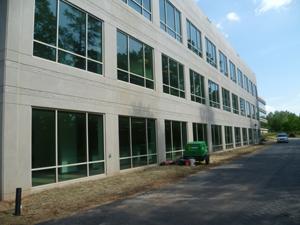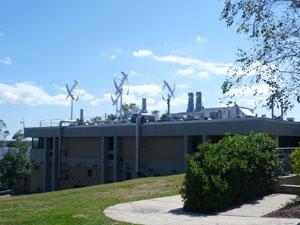Energy Efficiency Projects
As the agency charged with protecting human health and the environment, EPA strives to be a leader in reducing its energy use.
The vast majority of facilities where EPA has operational control are laboratories. Due to the nature of scientific research and the need for high ventilation rates to maintain indoor air quality, laboratories are significantly more energy-intensive than office buildings.
In order to meet and exceed federal energy efficiency goals, EPA considers multiple approaches for laboratory energy improvement, including:
- Facility consolidation to improve space utilization in EPA-operated buildings.
- Safe laboratory ventilation rate reduction to use less energy while ensuring air quality in research facilities.
- Capital improvement projects that result in energy savings, such as right-sizing equipment, retrofitting equipment and similar small-scale projects.
- Infrastructure replacement projects that provide energy-efficient alternatives for aging mechanical systems.
- Commissioning, recommissioning and retro-commissioning of entire buildings, wings and individual systems or projects.
Laboratory Consolidation Efforts
 In August 2014, EPA finished relocating its research staff from approximately 38,000 square feet of leased space into the Main Building it owns on the Research Triangle Park, North Carolina, campus. Through this consolidation effort, EPA reduced laboratory square footage and renovated existing laboratory space in the Main Building A Wing.
In August 2014, EPA finished relocating its research staff from approximately 38,000 square feet of leased space into the Main Building it owns on the Research Triangle Park, North Carolina, campus. Through this consolidation effort, EPA reduced laboratory square footage and renovated existing laboratory space in the Main Building A Wing.
This consolidation will significantly reduce EPA’s energy intensity and Scope 1 and 2 greenhouse gas emissions. It will also reduce the Agency’s operating costs, including rent and annual energy costs.
Infrastructure Replacement Projects (IRP)
 EPA is undertaking a multi-phase IRP at its Atlantic Ecology Division Laboratory in Narragansett, Rhode Island. The IRP has several energy performance improvement components, including:
EPA is undertaking a multi-phase IRP at its Atlantic Ecology Division Laboratory in Narragansett, Rhode Island. The IRP has several energy performance improvement components, including:
- Replace traditional fume hoods with more efficient, lower flow fume hoods
- Safely reduce fume hood ventilation rates
- Install variable air volume (VAV) supply boxes and manifold common exhaust
- Upgrade the existing Building Automation System (BAS)
- Provide nighttime setbacks to the existing control system
This project is estimated to result in an annual energy savings of 4.5 billion British thermal units (Btus) when completed.
Another IRP under design in EPA’s Western Ecology Division laboratory in Corvallis, Oregon, will:
- Convert an existing heating, ventilation and air conditioning (HVAC) system in the Main Building from constant volume to VAV
- Replace two existing air handlers; laboratory supply and exhaust valves; and the BAS
This project is estimated to result in an annual energy savings of 1.5 billion Btus when completed.
More information is available about energy efficiency projects and results at EPA:
